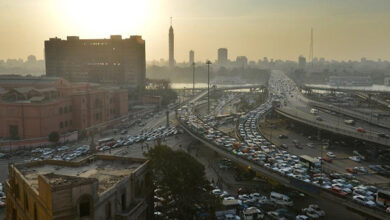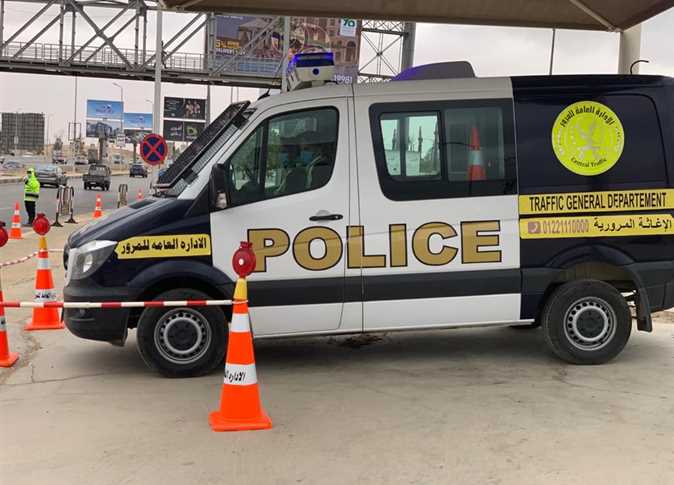Downtown: it boasts some of Cairo’s best-kept architecture, alongside some of it most battered buildings; some of the classiest establishments, and some of the seediest watering holes.
But if you owned it all, or rather, if you had the power to mould it into your own grand and unrestrained vision, where would you start?
What would you change?
It’s a question that Al-Masry Al-Youm has been posing to downtown dwellers, shop-owners, employees and fans of the neighborhood. The answers proved to be an interesting cocktail of the practical, the creative, the absurd, and, yes, the comical.
Yet whatever the basis of the many ideas, most seem bent on mending one prime, viciously hated downtown villain.
Traffic.
“Electrocute people who double park …”
“Make all the main roads pedestrian and install a decent tram system…”
“Have more police officers to monitor bad drivers…”
“Have fewer police officers but build more underground parking spaces…”
This is a sample of the range of solutions offered by contributors of various backgrounds.
Mohamed Fawzi, 29, owner of a street stand selling electricity accessories just off Tahrir Square, sees double parking as the main culprit, which he says is at the heart of “all this chaos we’re living in here.” He pointed to a white pick-up truck double-parked in front of his spot.
“Now look at that tow truck coming down the road our way,” he said. “See what happens when it passes this truck. See? Nothing.”
For Fawzi, a stricter application of traffic rules is what he would change first if he could.
Another downtowner, Abdel Hamid el-Gameel, 43, owns a factory specializing in car suspensions, and he identifies the traffic problem as a consequence of government centralization.
Sitting outside the factory’s managerial office, which his grandfather established in the 40s, he said, “You have five, six ministries all cooped in this already compressed downtown area. I would move them all out of the city.”
This is something that the government appears to be aware of, with recent statements by Housing Minister Ahmed el-Maghraby suggesting that authorities are considering moving ministries to New Cairo on the capital’s outskirts.
Yet traffic, though it seemed the thing most urgent for many, was not the only issue on people’s minds. There was still a sense of excitement over the idea of having more pedestrian roads and installing an efficient tram system, regardless of traffic conditions.
“Any real change to downtown unfortunately means that some people will have to be relocated and some buildings will have to be brought down,” says Dalia Wahbi, a retired architect who was raised in Bab el-Louk. “If residents and shop owners are willing to accept this first step, then I would focus on having wider streets and a simple tram system running from Tahrir Square to the old opera.”
Where possible, Wahbi says she would replace some of the demolished buildings with smaller studio-based apartment buildings that are built using a mix of classic colonial architecture and modern Islamic design.
Offering a more European perspective, British ex-pat Cynthia Arens, a “staunch fan of downtown,” says that while she would also have more pedestrian streets, “the key to any vibrant downtown is through its street performers.” Arens says she would encourage musicians, actors and artists to make use of pedestrian areas and pavements.
“I’d also have more outdoor cafés where you could drink,” she says. Arens acknowledges this may conflict with the pervading culture but says there are plenty of alcohol-serving cafés in downtown with their windows wide open to pedestrians.
Artist Amr Fekry, a resident of one of downtown’s rooftop apartments for some six years now, says he would invest more in maintaining downtown as the heart of the intellectual movement in Egypt.
“Downtown’s qahwas (coffee shops) and various hangouts are like intellectual clubs,” says Fekry. “They breed work, art and ideas. Without keeping that soul, Downtown would die.” He warned against turning Downtown into a capitalist venture, saying that once tea started to cost LE5, it would be the end of the locale’s spirit.
Instead of bringing in the engines of modernity, Fekry says he’d make use of the available spaces to promote art and theatre. “Some entrances to buildings in downtown are the size of small buildings, and these are spaces that could be made use of … I’d transform rooftops and garages and lofts into galleries and studios to draw artists together.”
Mohamed Hashim, a devout shisha smoker who spends much of his leisure time in qahwas near Townhouse Gallery, has some different ideas.
“I like nothing better than mixing the old with new,” says Hashim, “so I would make all of downtown a free WiFi hotspot.”
Hashim says he is no fan of the upper class café culture of Beano’s and Cilantro, and wants people to revert to using traditional qahwas. “WiFi will not lure people back to qahwas, but it will give this neighborhood a chance to really jump into the 21st century, while maintaining its roots.”
One of Hashim’s qahwa buddies, Karim, jumps in: “What are you talking about? Let’s first have street signs and clear buildings numbers before we ‘jump into the 21st century.’” Karim says that the current government focus on installing flashy “disco” traffic lights and cameras is taking things in the wrong order.
“First let’s sort out the non-existent pavements, let’s give these blackened buildings a wash, and let’s clear all the trash away before we talk about modernity,” says Karim.
Trash is one of the issues competing with traffic. Farida Mohamed, 73, has been living in the street for 35 years battling trash accumulation on the corner of Youssef el-Gendy Street, behind the AUC library.
Speaking from her little shelter on the pavement where she sleeps and eats, she says she has to pay the sweeper LE5 each month for him to remove trash from around her living area. “And then it’s all gathered at the end of the street and just stays there for days before it’s picked up.”
Mohamed says that it is not just a matter of hiring more street sweepers, but that “I’d set up a proper anti-littering campaign all over the streets.”
Yet whether it’s traffic, trash or trams, what all respondents ultimately agreed on was that, one way or another, downtown needs to change.
As Hashim put it, commenting on the English term of “downtown”, he said, “this place really is going ‘down,’ and we need all the creative solutions we can think of to stop it from sliding all the way into a ‘slum-town.’”
EgyptFeatures/Interviews




